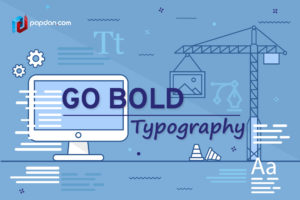With how ‘noisy’ the world has been in the past few years, barrage of news coming in 280 characters or less and of a phone screen swarming with notifications, minimalist design has been gaining more and more popularity in the meantime. Japanese brands like Muji and Uniqlo, paired together with Scandinavian Ikea have been leading the charge in popularizing clean lines and sleek silhouettes into our lives. Digitally, the same revolution has also been happening, with minimalist web design coming into favor over crowded elements.
Like its physical counterpart, minimalist web design embodies pretty much the same philosophy, using a relatively flat design scheme with extensive use of negative space and minimal clutter together with a streamlined and contrasting color palette. If you’re familiar with the cooking show MasterChef, then you should be intimately aware of the recurring hero challenge, in which the judges task the contestants in cooking a dish spotlighting a specific ingredient, the titular hero of the challenge. In web design, the same thing applies. Those features described above are usually used to make users focus on a hero element, usually an image or a text element enveloped in bold typography.
The word bold here stands for audacious, not the one playing as italic’s best friend in Microsoft Word, although it can be used as a form of bold typography. While there is no absolute definition in what defines a bold typography, there are common traits taken from various examples across the internet that exemplifies the philosophy of bold typography. Some of these traits include:
- Oversized centerpiece fonts
The easiest way of capturing attention is by taking advantage of the size of an absolute unit, like an oversized font. The New School, a progressive university in New York of which the prestigious Parsons School of Design is a part of, uses this trick to great effect. The homepage of The New School features a quote by notable faculty members and alumni as a centerpiece, used in combination with contrasting font colors to highlight particular keywords in the quote itself, which ties into my next point.
- Creative color choices
Monochrome is all the rage these days. Leica, the renowned German camera company, goes full vintage in 2015 came out with a camera that is strictly limited to capturing black-and-white pictures with the Leica M Monochrom. I question the common sense of the one who came up with that idea but it is a truth universally acknowledged that anyone in craving for attention must be in want of contrasting colors. They’re simply eye-catching and never fail to command attention. The landing page for the data company 55 Agency, for example, uses a simple two tone color combination of red and white with subtle animations happening on the right side of the screen.
The use of contrasting color choices doesn’t always have to be monochromatic or even strictly two-tone. The New School example from before uses predominantly black fonts over a white background with some words highlighted in red. This is precisely because the shade of red they used, the Parsons red is a specific color custom created by the school itself.
- Headlining typeface
Here are two words for you, sans serif. Sans serif or a lack of serif is a kind of typeface that lacks the subtle line at the end of a letter. Because of its simplicity, sans serif fonts are usually used for headings instead of body text but I generally use them everywhere. Apple’s San Fransisco is one of the most popular sans serif fonts while Times New Roman, the most basic of all fonts, is a typical serif font. Thanks to its simplicity, sans serif fonts fits rather well with minimalist design, as has been proven with every marketing material Apple has released in the last 5 years.
Fair warning, it is easy to mistake minimalism for dullness. Even if it seems like something that doesn’t take a lot of work, a good minimalist design takes a lot of planning and energy and that it should never sacrifice functionality. In design, there’s a philosophy called deceptive minimalism, in which complex engineering is hidden behind a supposedly clean interface and that should always be your goal. Proper minimalism is a way of making things easily digestible for your audience while still showcasing your capabilities.

